I particularly wanted to post a blog about two extraordinary people I have met during my time in Bikaner, in North Western Rajasthan.
Mr Seva Ram (on right in photo) lives and works in Khichan, some 90 or so kilometers south west of Bikaner and about 100 km from the boarder with Pakistan
. This area is a semi-arid desert terrain with a few lakes dotted here and there. Khichan is a busy agricultural centre that has a large population of Jain villagers. Jain is a branch of Hinduism that emphasizes that all life is sacrosanct. Consequently when the villagers noticed some eight years ago that the thousands of Demoiselle Cranes, which visit the village for the winter months, were being poisoned by the pesticides being used in the nearby grain fields, they got together to buy millet and grain for the cranes. Led by Seva Ram they walled off a small block in the centre of the village and spread the grain out. The birds now eat some $25 of grain a day, which the villagers collectively donate from their own savings, and which is supplemented in a tiny way by the hand full of international visitors who come every year. Khichan is a poor village community and this generous donation is huge when you consider that the annual average income is 70,000 Rp (approx. $1000). Now some eight years later they are being visited by some 8-10,000 Demoiselle Cranes in the winter months each day, to feed
. The birds approach the village, flying low over the houses before landing just outside the walled off feeding area, where they wait for their leader to fly in and signal the start of feeding. This fantastic event is spectacular and the best time to witness this is in the morning, between 8 and 10am.
Whilst this feeding seems to have stopped the steep decline of this visiting population, Mr Seva Ram quickly noticed that the Demoiselle Cranes were falling victim to the unprotected electrical power lines that ringed the village and the feeding area. So he began a protest that captured the imagination of many citizens in India and the Indian wildlife/environmental community. Mr Seva Ram started by petitioning the Indian Electricity Board to insulate the exposed wires that were resulting in up to 30 accidents and deaths of Cranes per week in the winter season. Not only that but he rescued the injured birds, cared for them out of his own pocket, nursing them back to health, taking many days off work unpaid as a result
.
Whilst Mr Seva Ram’s dedication to the health and well being of the Demoiselle Cranes is without question, he was certainly unprepared for the response of the Indian Electricity Board to his petition. He was first served with a 40,000 Rp (approx $550) fine for his activities, then his house was regularly cut off and his increasing protests ignored. It was only when he started a hunger strike, that his story came to national prominence and the Indian Electricity Board finally gave in. Now some of the electricity cables have been insulated, but as Mr Seva Ram says there is still work to be done. He is now campaigning for more insulation of the cables in and around Khichan, plus money to fence in the entire village so the Cranes can be protected from feral dogs and the loose cattle that roam free throughout India. His long term dream is to create a reserve for them, educate the local children and train local rangers, whilst constructing environmentally friendly tourist facilities so the Cranes can be watched without disturbing their behaviour
.
Mr Seva Ram’s great friend is Mr Jitu Solanki. He lives with his family in Bikaner and has devoted his life to wildlife and environmental issues. After graduating university with a degree in wildlife, he followed that with a Masters Degree also in wildlife, hoping to pursue his dream of becoming a ranger and managing a wildlife reserve in this semi-arid part of Western Rajasthan. Unfortunately he has fallen victim to India’s notorious caste system (a sort of class system), where as he lost out on several ideal ranger positions to individuals with no experience or qualifications, but who belong to the right caste.
Despite many setbacks, Jitu has fallen back on study and his father’s tourist business. Jitu is now in the process of finishing a PhD on snakes, which he reluctantly concedes is unlikely to help him get his dream job. He has also taken on the management of his father’s guesthouse from where he runs eco friendly wildlife and cultural tours, plus eco-camel treks targeted at the enthusiast and independent traveller. Bikaner, Jitu freely admits, is not an area currently associated with bird watching and animal safaris, however Jitu is working hard to change that perception. He has gathered a team of wildlife enthusiasts and professional guides together and is offering professional tours to sanctuaries (Tar Chappal), villages (such as Khichan) and areas of cultural interest (Shekhawati), plus all the sites in Bikaner with prices way below professional market rates
.
“We want to reach out to wildlife lovers and travellers interested in cultural experiences to show what this richly diverse and interesting region of Rajasthan can offer.” Long overlooked by tourists in favour of the major tourist cities of Jaipur, Udaipur and Pushkar, the Bikaner area offers a distinct animal experience. Unheralded areas around Bikaner offer a huge concentration of birdlife and animal life associated with Rajasthan’s semi arid areas, but also some star attractions like the Great Indian Bustard, the Desert Fox, the Yellow Eyed Pigeon, Creamy Crowser, the huge Cinereous Vulture, the Himalayan Griffon Vulture, the Black Billed Sandgrouse, the Indian Gazelle, plus many unique lizards, monitors and snakes.
But Jitu’s work does not stop there, as he constantly campaigning for the environment in this area. Long a supporter of the Bishnoi caste who renovate trees and wildlife creating sanctuaries under their management, Jitu is now a campaigner against what he calls the two biggest threats to this fragile environment. The first is the Acacia bush, which is feral and was introduced by the British, this pest is now endemic and cannot eaten by any animal including the less than picky camel. It is now suffocating the indigenous plants and poses a real threat to this fragile eco-system.
The second is rubbish and especially the plastic bag. Jitu took me to an area outside of Bikaner where cow’s bodies are taken. Here the Untouchables (the lowest caste of people) live in appalling conditions stripping the hides off these holy animals. The resulting bodies are then left on this Bishnoi land to the mercy of thousands of huge vultures. As we drove out to these mounds of rotting flesh and the feasting vultures, we past hundreds of large neatly piled strips of plastic - coloured plastic. “What are these I asked?” I was puzzled as to why piles of plastic were left inside the Bishnoi sanctuaries. “This is what remains of the dead cows,” Jitu answered. “This is one of our holy animals that dies, due to the consumption of many plastic bags and of course this is all that remains.” He went onto mention that many Indians do not believe or do not know that the cows are amongst several animals dying due to their waste, their plastic waste - which incidentally litters the country. “Nobody comes here to see this. We have a big problem that is getting bigger by the day, but no one is doing anything. Actually no one will do anything until the problem is critical, this is the Indian way.”
Jitu Solanki hopes that one day he will have his own land, so he can create his own eco sanctuary where he can protect his animals, birds and plants from the bad consequences of modern life. He is passionate about preserving these environments for the next generation, so everyone, especially his two young sons can enjoy nature.
Jitu Solanki
Vinayak Guesthouse
Tel:9414430948
Email:vinayakguesthouse@gmail.com
www.vinayakdesertsafari.com
It is best to contact Seva Ram through Jitu Solanki, as he does not speak English
Special Blog: Seva Ram & Jitu Solanki
Tuesday, October 01, 2013
 Bikaner, Rajasthan, India
Bikaner, Rajasthan, India
Other Entries
-
4Colombo, City of Curries and Cricket
Jul 1083 days prior Colombo, Sri Lankaphoto_camera3videocam 0comment 0
Colombo, Sri Lankaphoto_camera3videocam 0comment 0 -
5The Sri Lanka cloud forest.
Jul 1380 days prior Nuwara Eliya, Sri Lankaphoto_camera2videocam 0comment 3
Nuwara Eliya, Sri Lankaphoto_camera2videocam 0comment 3 -
6A Traditional Plantation House
Jul 2073 days prior Galagedera, Sri Lankaphoto_camera2videocam 0comment 1
Galagedera, Sri Lankaphoto_camera2videocam 0comment 1 -
7Baby Elephants, water & mud!
Jul 2469 days prior Giritale, Sri Lankaphoto_camera4videocam 0comment 6
Giritale, Sri Lankaphoto_camera4videocam 0comment 6 -
8Traffic Jams and Great Birdlife in National Parks
Jul 2568 days prior Tissamaharama, Sri Lankaphoto_camera4videocam 0comment 0
Tissamaharama, Sri Lankaphoto_camera4videocam 0comment 0 -
9Dinner Parties, Train Sets & Stilt Fisherman
Aug 0161 days prior Galle, Sri Lankaphoto_camera5videocam 0comment 1
Galle, Sri Lankaphoto_camera5videocam 0comment 1 -
10Negombo & Bangkok & Prickly Heat
Aug 0458 days prior Bangkok, Thailandphoto_camera3videocam 0comment 2
Bangkok, Thailandphoto_camera3videocam 0comment 2 -
11Phnom Penh, Palaces, Genocide & Pajamas
Aug 0953 days prior Phnom Penh, Cambodiaphoto_camera4videocam 0comment 2
Phnom Penh, Cambodiaphoto_camera4videocam 0comment 2 -
12More Elephants, Hoeing & Hello Kitty
Aug 1646 days prior Sen Monorom, Cambodiaphoto_camera3videocam 0comment 1
Sen Monorom, Cambodiaphoto_camera3videocam 0comment 1 -
13Prasat Preah Vihear, Soldiers & A Bordello
Aug 1844 days prior Preah Vihear, Cambodiaphoto_camera4videocam 0comment 0
Preah Vihear, Cambodiaphoto_camera4videocam 0comment 0 -
14Angkor Wat, orphans & getting wet.
Aug 2438 days prior Siem Reap, Cambodiaphoto_camera3videocam 0comment 0
Siem Reap, Cambodiaphoto_camera3videocam 0comment 0 -
15Tata, Trains, Taxis and Rickshaws. Chaos & Theft
Aug 3131 days prior Kolkata (Calcutta), Indiaphoto_camera6videocam 0comment 0
Kolkata (Calcutta), Indiaphoto_camera6videocam 0comment 0 -
16The Pink/Orange City, Masala Tea, Amber Fort
Sep 0823 days prior Jaipur, Indiaphoto_camera4videocam 0comment 1
Jaipur, Indiaphoto_camera4videocam 0comment 1 -
17Bundi, Dust, Forts and the real Rajasthan
Sep 1219 days prior Bundi, Indiaphoto_camera5videocam 0comment 0
Bundi, Indiaphoto_camera5videocam 0comment 0 -
18Maharajas, Lakes, Vintage Cars and Birds
Sep 1516 days prior Udaipur, Indiaphoto_camera5videocam 0comment 0
Udaipur, Indiaphoto_camera5videocam 0comment 0 -
19Big Moustaches, Street Food & Big Forts
Sep 2011 days prior Salawas, Indiaphoto_camera6videocam 0comment 0
Salawas, Indiaphoto_camera6videocam 0comment 0 -
20Psychotic Cows, Nagas, Omar Sherif & Desert Forts
Sep 265 days prior Jaisalmer, Indiaphoto_camera4videocam 0comment 0
Jaisalmer, Indiaphoto_camera4videocam 0comment 0 -
21Special Blog: Seva Ram & Jitu Solanki
Oct 01 Bikaner, Indiaphoto_camera5videocam 0comment 0
Bikaner, Indiaphoto_camera5videocam 0comment 0 -
22Public Speaking, Painted Havelis and lots of rats!
Oct 043 days later Mandawa, Indiaphoto_camera8videocam 0comment 0
Mandawa, Indiaphoto_camera8videocam 0comment 0 -
23National Parks, Road Rage, Drunks & a Tiger!
Oct 1211 days later Bharatpur, Indiaphoto_camera4videocam 0comment 2
Bharatpur, Indiaphoto_camera4videocam 0comment 2 -
24Mosques, Cremations, Festivals & Dhal
Oct 2120 days later Varanasi, Indiaphoto_camera7videocam 0comment 0
Varanasi, Indiaphoto_camera7videocam 0comment 0 -
25Nepal, trekking, Cold, Everest and Gurkas
Oct 2827 days later Kayakatta, Nepalphoto_camera4videocam 0comment 0
Kayakatta, Nepalphoto_camera4videocam 0comment 0 -
26Karmi Farm, Sherpa Tenzing, Mr Happy and Momos
Nov 0535 days later Darjeeling, Indiaphoto_camera4videocam 0comment 0
Darjeeling, Indiaphoto_camera4videocam 0comment 0 -
27Rhinos, Armed Guards & Posing For Photos
Nov 1444 days later Kaziranga National Park, Indiaphoto_camera5videocam 0comment 0
Kaziranga National Park, Indiaphoto_camera5videocam 0comment 0 -
28Spiders, The Kharsi, Archery and Bad Driving
Nov 2050 days later Cherrapunji, Indiaphoto_camera5videocam 0comment 0
Cherrapunji, Indiaphoto_camera5videocam 0comment 0 -
29Monpas, Sumo, Yak Butter Tea & Indian Army
Nov 2454 days later Tawang, Indiaphoto_camera7videocam 0comment 0
Tawang, Indiaphoto_camera7videocam 0comment 0 -
30Uncles, Nuns, Bridges, Red Rice and Gompas
Nov 2757 days later Sakti, Indiaphoto_camera5videocam 0comment 0
Sakti, Indiaphoto_camera5videocam 0comment 0 -
31Buddhist Festival, Feral Dogs, Exploding Cakes
Dec 0161 days later Bomdila, Indiaphoto_camera6videocam 0comment 0
Bomdila, Indiaphoto_camera6videocam 0comment 0 -
32A Horror Journey
Dec 0363 days later Tezpur, Indiaphoto_camera4videocam 0comment 0
Tezpur, Indiaphoto_camera4videocam 0comment 0 -
33Hornbill Festival, Nagas & Nagaland
Dec 1070 days later Kohima, Indiaphoto_camera6videocam 0comment 3
Kohima, Indiaphoto_camera6videocam 0comment 3 -
34Pied Pipers, Hard Beds, Ao and Chang tribes
Dec 1878 days later Mokokchung, Indiaphoto_camera7videocam 0comment 0
Mokokchung, Indiaphoto_camera7videocam 0comment 0 -
35Battles, Monoliths, Street Photography, Home
Jan 0192 days later Dubai, United Arab Emiratesphoto_camera6videocam 0comment 0
Dubai, United Arab Emiratesphoto_camera6videocam 0comment 0 -
36Athens, Bristol, Doctors and Rain - lots of rain
Jan 15106 days later Athens, Greecephoto_camera2videocam 0comment 0
Athens, Greecephoto_camera2videocam 0comment 0 -
37Addis, Bus Travel, Malibu Storks and Lake Storms.
Feb 01123 days later Addis Ababa, Ethiopiaphoto_camera4videocam 0comment 0
Addis Ababa, Ethiopiaphoto_camera4videocam 0comment 0 -
38Minibuses, Police, Impounding, Gon
Feb 05127 days later Awasa, Ethiopiaphoto_camera4videocam 0comment 0
Awasa, Ethiopiaphoto_camera4videocam 0comment 0 -
39Baboons, Mountains, 4000m Trek, Ibex
Feb 09131 days later Gonder, Ethiopiaphoto_camera5videocam 0comment 2
Gonder, Ethiopiaphoto_camera5videocam 0comment 2

 Bikaner, Rajasthan, India
Bikaner, Rajasthan, India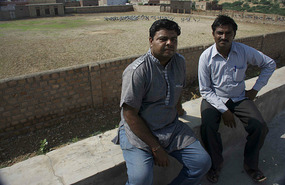
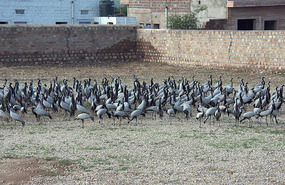
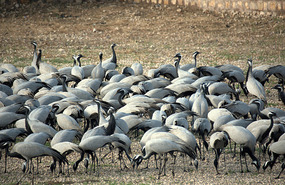
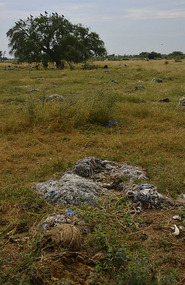
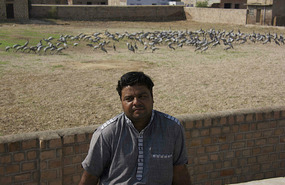








2025-05-22